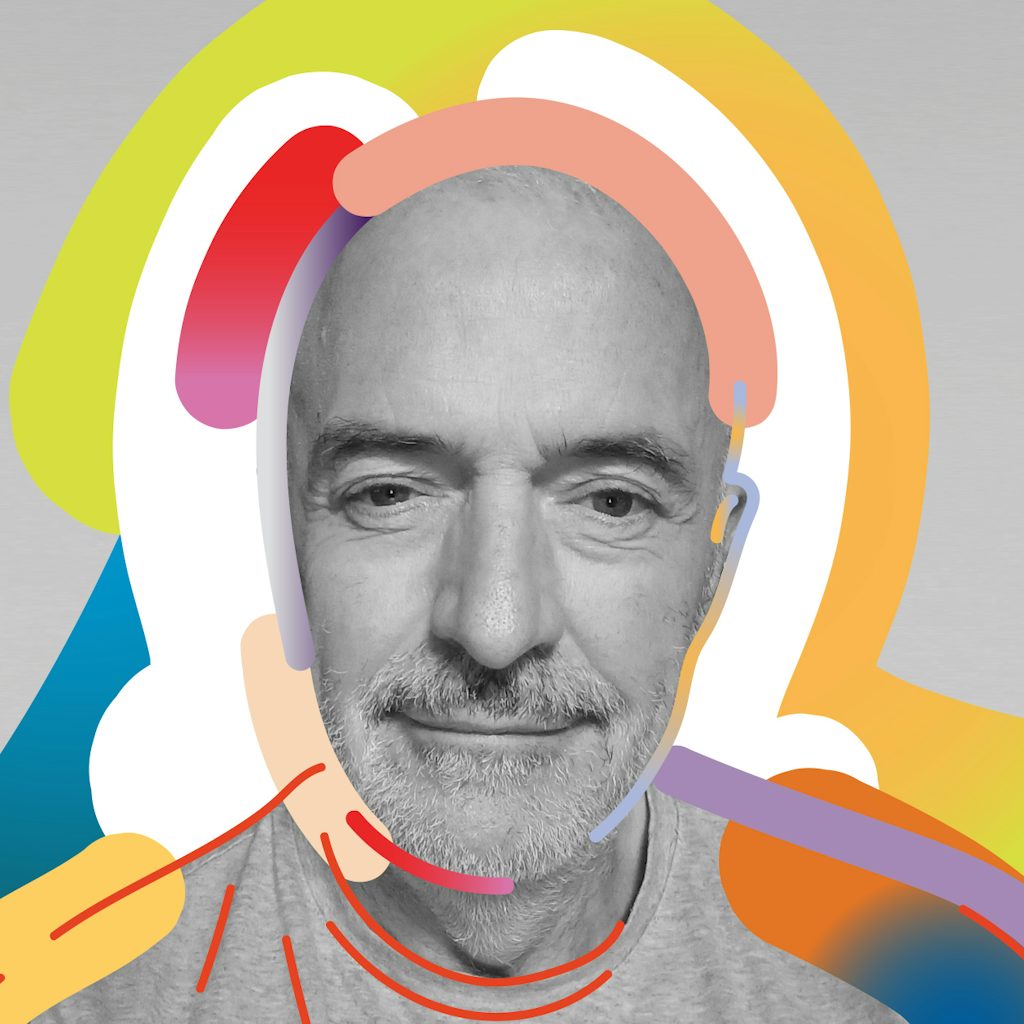
part 2: Who are the main players since 2006?

Centrale for contemporary art
In this second part of our sketch of the visual arts in Flanders, we look at subsidized participants in the field, both those which do have collections and those which do not, as well as private players, including for profit and non-profit initiatives. We moreover look at the growing acquisition of works of visual art in society through ‘inclusive’ works, participatory initiatives and exchanges with other sectors.
The 2006 Arts Decree created a framework for equal support for artists and organizations in different disciplines. Since its implementation, visual arts organizations have also been able to receive multi-year working subsidies.
We will complete this summary by mentioning three challenges facing the visual arts in Flanders today.
Would you like to know more about how the visual arts field developed in Flanders and Brussels? If so, be sure to read Part 1 of this summary, which offers an historical overview from 1950 to 2006.
1. Visual Arts Organizations (since 2006)
Locations for Presenting Visual Art
As had been true in the previous century, for the last 15 years, individuals, including curators and/or art lovers, have been the driving force behind the establishment of new visual arts organizations. These include Extra City (founded in 2004) and LLS 387 (now LLS Paleis) (2007) in Antwerp, Netwerk Aalst (2005), WARP (2006) in Sint-Niklaas, WIELS (2008) and Hangar Photo Art Center (2016) in Brussels.
In addition, cities and regional authorities have also set up new organizations for visual art, such as the CENTRALE for Contemporary Art (founded in 2006) in Brussels, the kunsthal operations of M Leuven (est. 2009) and Kunsthal Ghent (est. 2018) and the contemporary arts activities of the Hof van Busleyden (est. 2018) in Mechelen, which now also includes De Garage.
In 2024, the City of Bruges is expected to open their new Brusk exhibition hall. The City of Courtrai is also planning a new museum in the Groeninge Abby, which will focus on historic and contemporary art and local history. In 2017, the Brussels Region opened KANAL-Centre Pompidou, a multidisciplinary arts organization with access to the visual arts collection of Centre Pompidou in Paris.
Exhibition spaces have also been created in conjunction with art schools and universities. These include KIOSK (opened in 2006) at the KASK School of Arts in Ghent, KRIEG (2017) at PXL-MAD School of Arts in Hasselt, and Pilar Huis (2019) for arts and sciences at the VUB Vrije Universiteit in Brussels. The Sint-Lukas Gallery at the LUCA School of Arts in Brussels had already opened its doors back in 1980.

There are moreover many facilities for presenting art that are supported by collectors and private actors, the most important of these being La Loge in Brussels (founded in 2012) and Emergent in Veurne (2013). Other initiatives that have been created over the last couple of decades include Zebrastraat in Ghent, Liebaert Projects in Courtrai, and Villa Empain, Fondation A Stichting, Fondation Thalie, Fondation CAB and La Verrière, among others, in Brussels.
Many of the visual arts organizations in Flanders are still relatively young, but they have already earned their place alongside visual arts organizations that existed before the year 2000, such as Croxhapox, Etablissement d’en Face, Argos, iMAL, Be-Part, MDD, CIAP, Z33 and NICC
A number of multidisciplinary arts centres also include the production and presentation of contemporary visual arts. Among these are deSingel, Beursschouwburg, KAAP and STUK. As a national institute, the BOZAR Centre for Fine Arts often presents established talent in contemporary fine arts, as well as awarding the biennial Belgian Art Prize.
Project Spaces
Numerous private, non-profit initiatives have also been undertaken on the parts of artists, curators and others working in the arts, in part as a reaction to the limited (exhibition) opportunities in public institutions.
Thanks to their enterprise, Flanders has a significant tradition of project spaces and artist initiatives dating back to before the new millennium, ranging from Etablissement d’en Face in Brussels to Club Moral in Antwerp.
Today, these initiatives are spread all across Flanders and the Brussels region. They include A.VE.NU.DE.JET.TE – Institut de Carton, Ballon Rouge Collective, cAsstL, De Nor, Deborah Bowmann, l’Edition Populaire, Garage Cosmos, In de Ruimte, Croxhapox, Tick Tack, Out of Sight, Island, seconDRoom, Social Harmony, Sorry and many others. Some of these locations, such as Troebel Neyntje in Antwerp, are art projects in their own right. Their functions go much further than just offering space for artistic presentations. They provide space for experimentation, for additional learning with fellow professionals and for building bridges with local communities. They must therefore be seen as an important link in the development of talent, skills and know-how among artists and other professionals.
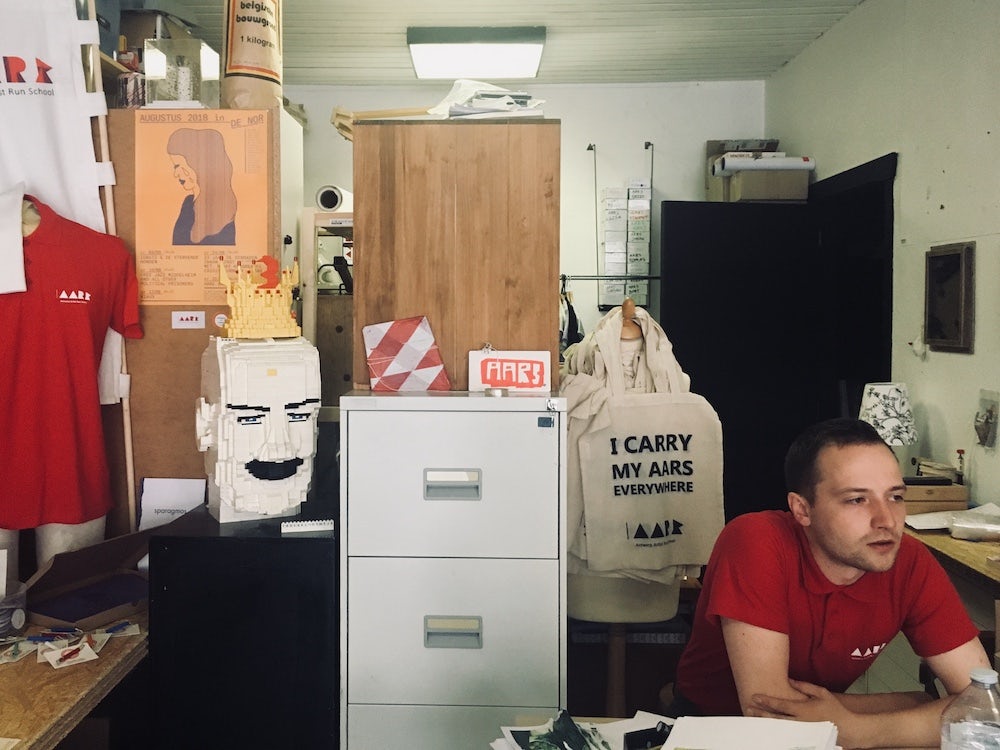
Some of these initiatives rely entirely on volunteer work. Others help finance their activities by selling works of art. Occasionally, they receive some support from local authorities or even the Flemish Community. Some of these project spaces do grow into art organizations with a more stable, permanent character, while others are irregular or temporary initiatives. And they sometimes come together and join forces. One example of this is De Biënnale van België (The Biennale of Belgium), a festival of contemporary art organized by In de Ruimte, which brings together selected project spaces, artist collectives and artists.
Art Festivals, Biennials and Triennials
In addition to presentation spaces with permanent locations, there are also recurring events, including art festivals and events held every two or three years – the biennial and triennial exhibitions. They present art in cultural institutions, temporary spaces, or in open public space in the form of an art route.
The Watou Arts Festival is one of our oldest festivals, annually presenting visual art in dialogue with poetry in the municipality of Poperinge. Beaufort, organized by Westtoer, is a triennial art event that extends along the entire coastline of Belgium. With art interventions in public space and the sea as its theme, contemporary art is linked with tourism and the (urban) development of the coast. Since Beaufort’s initial edition in 2003, many works have remained in place, together creating a permanent sculpture park.
The Bruges Triennial, resumed in 2015, connects art and architecture with the historic city centre – with ‘the city of today and tomorrow’. It is an initiative of the City of Bruges in collaboration with Brugge Plus, the Bruges museums and the CC Bruges cultural centre. The Stadstriënnale Hasselt-Genk (Hasselt-Genk City Triennial) is a multidisciplinary arts festival that connects Genk and Hasselt around a specific theme and in which various art institutions participate. In 2018, the City of Courtrai began a municipal festival to be held every three years, aimed at bringing visual art to a larger audience.
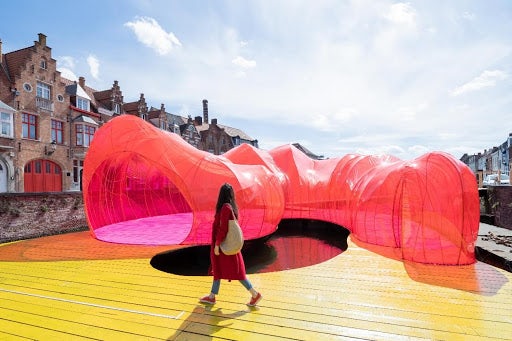
Since 2003, the Contour Biennial for Contemporary Art has been held in Mechelen, currently organized by the Nona Arts Centre. For each edition, a leading non-Belgian curator is appointed to select contemporary artists and incorporate their work within the city.
Every three years, the Warp Arts Centre in Sint-Niklaas holds Coup de Ville, an art route through the city with interventions by artists around a specific theme. Antwerp Photo is an international photography biennial that shows what is current and important in the world of photography. Every other summer, the Roger Raveel Museum, MUDEL, the Museum of Deinze and the Leie Region and Museum MDD together hold the Biënnale van de schilderkunst (Painting Biennial). Kunst & Zwalm, a biennial art route in the Zwalm region, has been held since 1997, organized by BOEM vzw.
The Courtisane Festival in Ghent focuses on audiovisual art (experimental film and video), giving shape to the intersection between visual art as a whole and film.
In Leuven, ARTEFACT is the annual arts festival of the STUK Arts Centre, with a focus on (visual) culture, current events and societal challenges. Still in Leuven, STUK and M Leuven are behind Playground, a performance festival highlighting the world where the visual and the performing arts meet. In short, interdisciplinarity, local embedding, thematic inspiration, public space and collaboration between multiple participating partners are factors that characterize many festivals, biennial and triennial exhibitions and events. They frequently make contemporary visual art more visible to a broader audience.
Contemporary Visual Art and Museums
Museums for modern and contemporary visual art, such as M HKA, the Fotomuseum (Photography Museum) and Middelheim Museum in Antwerp, Mu.ZEE in Oostende, S.M.A.K. and the Friends of the S.M.A.K. in Ghent all actively collect and conserve contemporary visual art. They also regularly exhibit it, alongside works already included in their collections
For Belgian works of video art, the Argos Centre for Audiovisual Art is the most important institution for archiving, conserving and making the works known.
Some museums, including the Koninklijke Musea voor Schone Kunsten (Royal Museums of Fine Arts) in Brussels and the Groeninge Museum in Bruges profile themselves as trans-historical because their collections include both historical and contemporary works.
Although the Dhondt-Dhaenens Museum (MDD), M Leuven, Roger Raveel Museum and Hof van Busleyden in Mechelen do not operate with an active acquisitions policy for contemporary art, they do provide a kunsthal service that not infrequently seeks a connection between contemporary art and their own permanent collections of historical or Modern art. M Leuven is also the home of the Cera Collection and makes use of these works in their exhibitions. Comparable circumstances and activities also apply to the Museum of Ixelles and the Museum of the Leie Region in Deinze.
Other museums dedicated to fine art, municipal history or other subject matter, including the Design Museum Ghent, MIMA, the ModeMuseum (Fashion Museum) and the Dr. Guislain Museum also regularly engage in dialogue with contemporary art.
The MIMA Millenium Iconoclast Museum of Art in Brussels opened in 2016, highlighting a young generation of artists who transcend artistic genres and wish to attract new audiences. That was followed in 2017 by the opening of KANAL – Centre Pompidou. Once renovations are complete, they will be able to make use of the collection of Centre Pompidou in Paris.
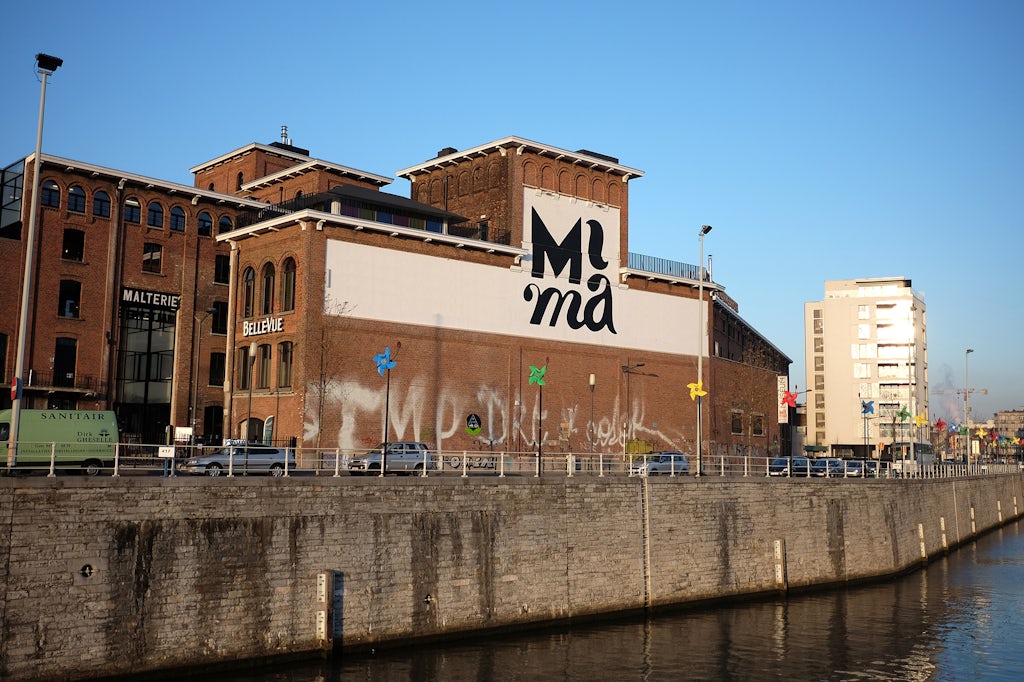
Recently, some cities and the Brussels Region have translated their focus and interest in contemporary visual art into an active acquisitions policy, usually around the artists who live and work locally. The Brussels Region provides a purchasing budget that is implemented by KANAL – Centre Pompidou. The Antwerp city council is launching an acquisitions policy managed by M HKA, and, since the Corona crisis, the City of Leuven has been participating in M-LIFE, for the purchase of work by emerging talent in collaboration with M Leuven and the Cera Foundation during COVID.
Finally, Flemish museums are also questioning the valuation frameworks with which they acquire art and give meaning to their collections. Can the historical view of Western art be opened to other cultural and historical valuation frameworks? Both the Middelheim Museum and Mu.ZEE have re-examined their websites and collections from the colonial past in search of a more inclusive way of working with collections, artists and audiences. In 2020-2021, the M HKA exhibition Monoculture: A Recent History examined such questions about how we appreciate and value art.
Private museums
Exhibitions of visual arts do not only take place in government-funded institutions. Private collectors in Flanders and Brussels have also made their collections available to the public.
Frédéric de Goldschmidt, Annick and Anton Herbert, Geert Verbeke and Carla Verbeke-Lens, Charles Riva, Walter Vanhaerents, Mark Vanmoerkerke, Hugo Voeten, Alain Servais and the Deweer family all have their own locations where they show selected works from their respective collections.
Some collectors’ organizations, such as Été 78 or the Verbeke Foundation, moreover make their organizations and spaces available for artists (or even other collectors) to use.
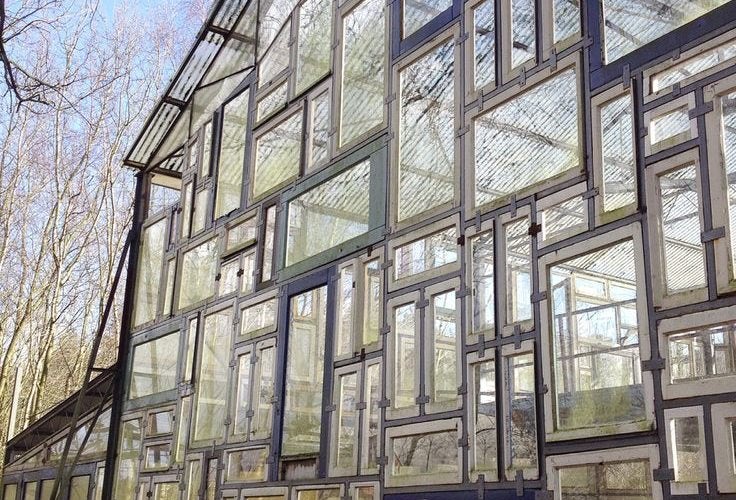
Magazines, Publications and Artist Books
In recent decades, art magazines and books have played an important role in the discourse and public debate on contemporary visual arts. Today, periodicals such as De Witte Raaf (est. 1986) and HART Magazine (est. 2006) publish reviews and in-depth articles about art. TheArtCouch is a weekly online magazine, and both Rekto:Verso and Etcetera also regularly publish articles about visual art.
One-off publications about specific bodies of work or exhibitions are primarily published by the art institutions hosting them, whether or not in collaboration with publishers either in Belgium or abroad. These publishers include Mercatorfonds, Lannoo, Imschoot uitgevers, Hannibal Books, MER., Borgerhoff&Lamberigts, Art Paper Editions and Posture Editions.
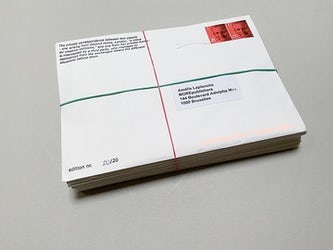
Flanders moreover has a strong tradition in artist books, made by the artists themselves and dedicated to the work they produce. They are sometimes, but not always, published in limited editions, or they can be the result of a collaboration with one of the above-mentioned publishers, or more specialized publishers, including Gagarin, Gevaert Editions, Triangle Books, RIOT, Theophile’s Papers, MOREpublishers, MER.Paper Kunsthalle, From Me To You Publications and so on.
Visual Art in Society: From Reaching to Meeting and Making Together
As do other disciplines in the arts, visual art has a range of ways to engage in dialogue with society as a whole. Arts organizations are increasingly tending to focus on public relations, developing a better eye to more diversified audiences in order to offer everyone access to art.
Art institutions are striving to achieve an active dialogue with diverse communities by way of specific projects in which artists are also involved, such as communal gardens or park festivals. These include the. SuperVliegSuperMouche festival organized by WIELS, the creative dialogue between activists, artists and local residents in De Fabriek, hosted by Netwerk Aalst, after-school meetings between diverse young people, cultures and artists in the Boslabs in Het Bos (Woodland Labs), or Argos’s subjective tours of exhibitions with people from diverse cultural fields, who interpret the works from their own perspectives. Rasa was a pioneer (stopped in 2021), bringing children and young people into contact with contemporary art by organizing travelling exhibitions on themes intended for their age groups.
New artist initiatives have been rearranging the relationships between art and the public in radical ways. Art and even entire organizations are anchoring themselves in diverse localities in their respective cities, so that the process of meeting one another and creating together in itself raises all kinds of questions about art in relation to society. These initiatives have a self-evident inclusive effect and are attentive in their handling of artists, residents, space and materials. Consider, for example, The Constant Now, a creative platform focused on diversity, or Toestand in the Canal Zone of Brussels, or De Koer, located in the middle of the Brugse Poort in Ghent, or such platforms as Cinemaximiliaan Globe Aroma and Post Collective for artists and art lovers with immigrant or newcomer backgrounds.
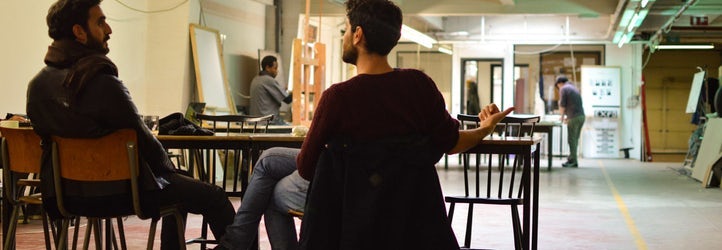
Wit.h in Courtrai organizes artistic projects with people with mental handicaps, and both KAOS and De Loods present art in psychiatric institutions. The classic, traditional relationships between the centre and the periphery, between what art is and what it is not, between the norm and the exception and so on are all being reshaped, or at the very least brought into question: from ‘handicap’ or ‘outsider’ to inclusivity and even ‘cultural vandalism’.
The visual arts are also engaging in relationships with other sectors, such as education, business, health care, science and innovation, as well as with new environments, including public (urban) space, nature and forests. Art has gone well beyond the walls of the studio or exhibition space. The dialogue with sectors with different goals and results feels fruitful for both parties. In Limburg, a trajectory around art, architecture and landscape along bicycle paths has been started. In Ghent, artists work with public works employees on recycled waste, an artist works with NASA, using nanotechnology to develop a new colour, and there are artists working long-term in health care. Various organizations have begun specializing in such cross-sector dialogues, including Arteconomy, Gluon (arts, science and education), iDROPS (social innovation), Les Nouveaux Commanditaires (The New Patrons) and Platform Kunst in Opdracht (Platform for Public Art Commissions).
It is also possible to look at arts organizations through specific subdisciplines or themes:
- Contemporary painting and sculpture can be seen at BOZAR and WIELS in Brussels, at M Leuven, at the museums for modern and contemporary art, including M HKA, S.M.A.K. and Mu.ZEE, as well as at smaller museums, including MDD in Deurle and the Roger Raveel Museum in Machelen-aan-de-Leie.
- Experimental practices and/or social and societal themes such as urban living, sustainability and decolonialization are found at organizations including Netwerk Aalst, KIOSK in Ghent, LLS Paleis in Antwerp, Kunsthal Ghent, Extra City in Antwerp, La Loge, WIELS and the CENTRALE for Contemporary Art in Brussels, and the Contour Biennale in Mechelen.
- A number of institutions focus attention on the audiovisual as it relates to visual art. These include Argos and the Beursschouwburg in Brussels, STUK in Leuven, the Contour Biennale in Mechelen and Courtisane in Ghent.
- Photography is the purview of the Fotomuseum in Antwerp, a discipline also found at Bozar, WIELS, Stichting A and Hangar in Brussels, as well as M Leuven.
- STUK, M Leuven and the Kaaitheater in Brussels present performance as a crossover between the visual and the performing arts.
- Sound Art is a more specific presence at iMAL, the CENTRALE for Contemporary Art in Brussels, Z33 in Hasselt, and STUK and the Artefact Festival in Leuven.
- Z33 engages with intersections between design, architecture and visual art.
- The Frans Masereel Centre in Kasterlee is a centre of expertise in contemporary printmaking and graphic design.
- Finally, art in relation to science, media and technology can be found at Constant vzw, GLUON and iMAL in Brussels, as well as in such working spaces as Werktank and Overtoon.
2. The Artists as Driving Force
Visual artists in Flanders and Brussels pursue a wide range of practices, ranging from painting, sculpture and photography to video, installation, performance, sound art, art in public space and social, participatory work. They often work independently, either on their own or in environments with ever-changing professional partners.
Despite limited government support, visual artists have succeeded in developing their practices and professionalizing a framework for themselves. Artists with sufficient income can build up their studios, working with different experts and assistants as a kind of production unit in the service of their practices.
This is the case, for example, with artists Berlinde De Bruyckere, David Claerbout, Joëlle Tuerlinckx, Hans Op de Beeck and Dirk Braeckman, to name but a few. We can moreover conclude that over the last decade, artists have been working more frequently together, sharing spaces and resources.
Studio Facilities
There are several organizations that provide affordable working spaces for artists, including Cas-Co (Leuven), De Tank (Bruges), Nucleo (Ghent), Studio Start/AAIR merged in 2022 as Morpho (Antwerp) and Vonk (Hasselt and Genk). Level Five is a recent initiative by artists for artists, in Brussels. They negotiate with local authorities and private parties to acquire temporary use of unoccupied spaces, as well as seeking long-term perspectives through purchase or lease.
In addition to providing physical space, these organizations offer artists fertile biotopes in which to share knowledge and set up joint or collective activities, including open studios, studio visits, exhibitions and projects. These organizations are primarily supported by their local governments.
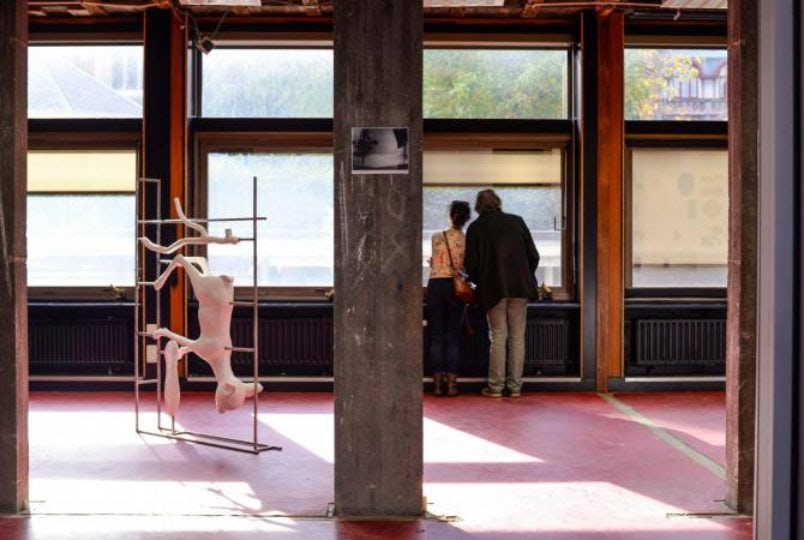
Artists Initiatives
Artists are increasingly coming together to establish collective initiatives. They share studio spaces or buildings by making temporary use of empty spaces, renting, or even purchasing spaces jointly. They often organize small-scale exhibitions and lectures. Artists also set up their own spaces for presentations, exhibitions or projects. These project spaces are used to present their own work and/or that of other artists whom they consider relevant. (see also Project Spaces)
Artists set up organizations in order to share artistic, business and promotional knowledge and structures. One of the pioneers in doing this was Auguste Orts, a production and distribution platform founded in 2006 by Herman Asselberghs, Sven Augustijnen, Manon de Boer and Anouk de Clercq. Their enterprise was soon followed by other artists sharing comparable structures. These include Overtoon, Werktank, Jubilee, Escautville, Elephy, Messidor and others.
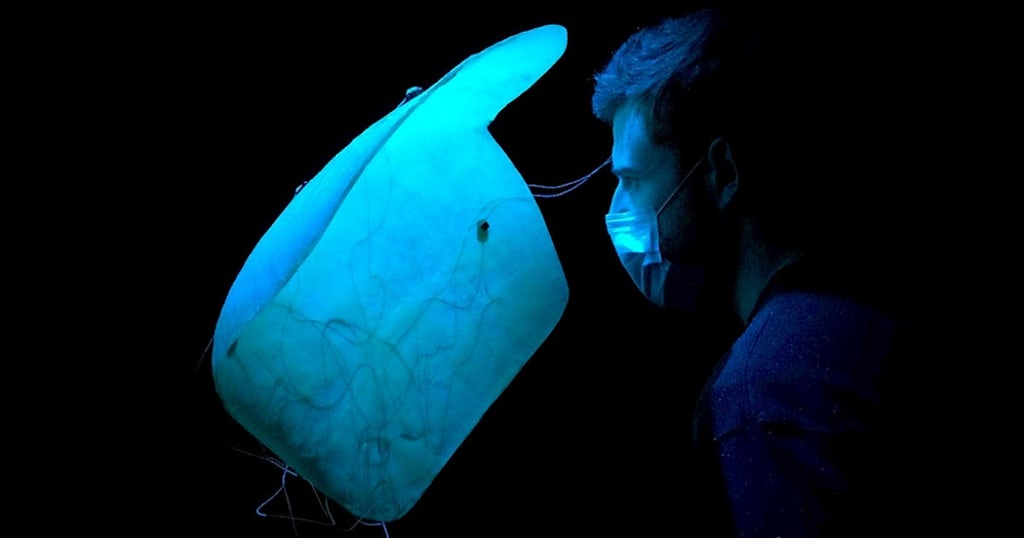
A new generation of artists is ensuring the emergence of new platforms and collectives, focusing attention on such themes as community care, fair practice, inclusion and other social issues. Amongst these are Astrid Collectief, Permanent, Werktitel, Collectief Faire-Part, the Greyzone Zebra research project and The Constant Now.
Residencies and Working Spaces
Since 2000, the number of residencies and working spaces for artists has both expanded and become increasingly professional, in part thanks to the influence of the Arts Decree. Examples of organizations that provide working residencies for visual artists in Flanders and Brussels include Morpho (before AAIR), Be-Part, WIELS, FLACC (merges with CIAP in 2022 as Jester), Frans Masereel Centre, Overtoon, Kunsthal Ghent, CAS-CO in collaboration with M Leuven, KAOS, KAAP, MDD, Villa Empain, Timelab, Samenschool, Residentie Heyvaert and the Verbeke Foundation.
Working or studio spaces are often referred to in the same breath as artist residencies, in part because some organizations offer and combine the two options. Working spaces offer infrastructure, equipment and/or materials with which artists can literally get down to work. The artists receive feedback and production support, and sometimes organizational advice as well. Examples of these facilities include Jester (formerly FLACC), Het Glazen Huis (Flemish Centre for Contemporary Glass Art, Frans Masereel Centrum, iMAL, Constant and Gluon.
These artist residencies and working spaces for artists are available to artists from Belgium and abroad, encouraging a fruitful exchange between professionals from diverse countries.
In addition, more and more visual arts organizations are offering short-term residencies for artists, so their relationships with their artists can be closer. The Beursschouwburg, De Warande, Netwerk Aalst and Z33 are all offering temporary residencies in order to support artists in the development of new projects.
Higher Art Education
University level art education also plays an important role in the development of artistic practices and oeuvres. The graduate and postgraduate programmes at the HISK Higher Institute for Fine Arts offer emerging artists the opportunity to focus on their professional artistic practices and expand their networks for up to two years. Also, in collaboration with the University of Ghent (UGent) and S.M.A.K., the KASK School of Arts has the only graduate programme in Curatorial Studies available to art curators in Flanders.
Other options for in-depth artistic investigation include ‘research in the arts’ or a ‘doctorate in the arts’ at one of the Schoolsof Art in Flanders or Brussels. One important difference from artist residencies is that the artists are expected to produce very concrete results, often in the form of academic publications and/or a final art project at the doctorate level.
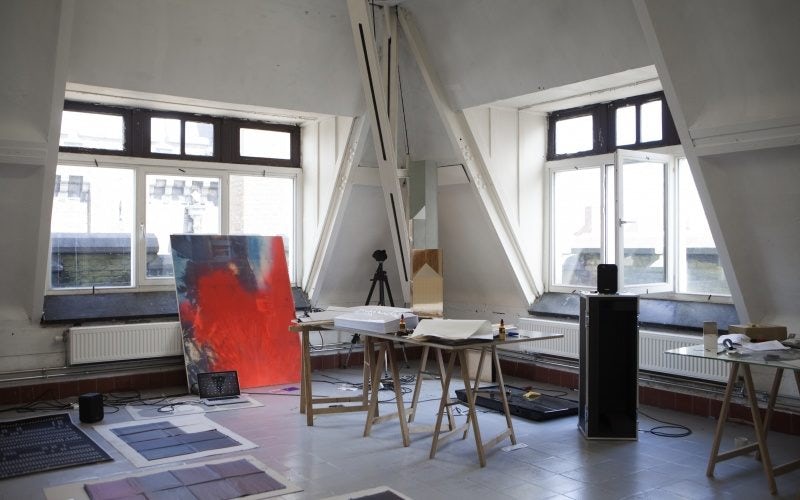
Subsidies for Artists
The Arts Decree provides funding for project grants, working grants and subsidies for organizations, and grants for artists, as well as support for public exhibitions or presentations outside of Belgium and (international) artist residencies. Those creators who produce single-screen audiovisual work can call on the Vlaams Audiovisueel Fonds or VAF (Flemish Audiovisual Fund).
Grants for artists are an important instrument on the part of government in order to help individual artists develop their oeuvres and career paths. Complementary to these grants, artists are able to work as artists in residence in a foreign country, as long as the residency is approved by the Flemish authorities. Flanders has active artist-in-residence agreements with the following organizations: Residency Unlimited in New York, AIR Berlin Alexanderplatz, Jan Van Eyck Academy in Maastricht, Ujazdowski Castle Centre for Contemporary Art in Warsaw, Cité Internationale des Arts in Paris, Isola Comacina, Academia Belgica in Rome, and Le 18 in Marrakesh. Flanders also supports residencies in media arts and digital culture at EMPAC, Medialab Prado and FutureLabs Ars Electronica.
The awarding of project subsidies and grants in the visual arts has not been consistent or stable from one year to the next. The total amount of about €1.5 million awarded in 2008 had fallen to €1 million two years later, in 2010. The year 2013 saw a peak of €2 million, to again be reduced to €1.1 million in 2015, and €1.3 million in 2017. In addition, the total percentage of visual art that received support in the combined arts sector fell from 28% in 2006 to 14% in 2017. The actual number of grants and subsidies awarded to the visual arts also dropped by half, from 174 in 2006 to 86 in 2017.
The (more modest) support for public presentations of Flemish visual art in foreign countries has been equally unpredictable, but the annual awarded amount has risen from about €70,000 in 2006 to €170,000 in 2017. The percentage of the awarded amounts going to the visual arts also increased, from 12% in 2006 to 23% in 2017.
The Role of the Curator
The freelance status of many curators is not always due to their own preference for independence, but is a result of the limited number of visual arts organizations in Flanders. Curators consequently work from project to project within the growing array of festivals, art routes and biennial or triennial exhibitions.
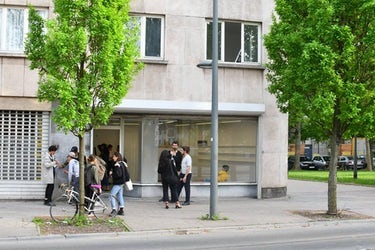
Freelance curators also set up their own collective organizations, including Komplot and meeR, and establish project or exhibition spaces with other curators, writers and artists. Finally, independent curators can also apply for grants to cover their individual projects. As of today, however, they do not qualify for development or working grants, even though research and development are as essential for a curator as they are for an artist.
In recent years, the function of the curator has been increasingly divided between the production of their own new work (writing articles and seeking collaboration partners, etc.) and the promotion and representation of artists. This second category of agent or representative is categorized by an extensive network of contacts, but no associated gallery space. This distinguishes independent curators from gallery spaces that specialize in promoting artists, such as Tallieu Art Office, A Touch of Art, Berserk Art Agency and arp (Art Rebels Party), among others…
Artist Archives and Legacies
After the death of an artist, his or her work can continue to circulate, and in some cases, an oeuvre finds only post-mortem success. Having reliable overviews of these works in the form of proper archives is indispensable. The responsibility for artistic legacies falls to the surviving families, who in turn seek support from government authorities, arts and heritage institutions, academic institutions and collectors. For this reason, it is crucial to have a viable plan and a clear description of the various roles of all those involved, both private and public.
In the last ten years, a number of legacies or estates have been created around the body of work left by deceased artists, such as Bernd Lohaus or Philippe Vandenberg. These estate organizations are responsible for the archiving, conservation, promotion and international distribution of the work concerned.
In order to archive and promote information about the art, the artists and their legacies, in a response to a request from the sector, the Flanders Centre for Art Archives (CKV) was founded under the auspices of the M HKA in Antwerp. The CKV in turn also participates in TRACKS, an online toolbox with instructions for artists and art organizations concerning the conservation of their own or their organizations’ collections.
3. The Art Market, National and International
In the last decade, all around the world, the art market has seen an increase in scale that means that it now operates on a global basis, in part under the influence of the enormous amounts of capital that are currently being invested in contemporary art. Brussels and Flanders also have galleries, such as Zeno X and Xavier Hufkens, that have been part of that expansion.
It is notable, however, that Belgian galleries – even very large galleries – have continued to keep their home bases in Belgium, without opening branch galleries in other countries. There are a few exceptions. Until a few years ago, Jan Mot also operated in Mexico City, and just recently, as a result of the fusion of the Boronian Gallery in Brussels with Xippas in Paris, Baronian Xippas is currently also active in Paris and Geneva.
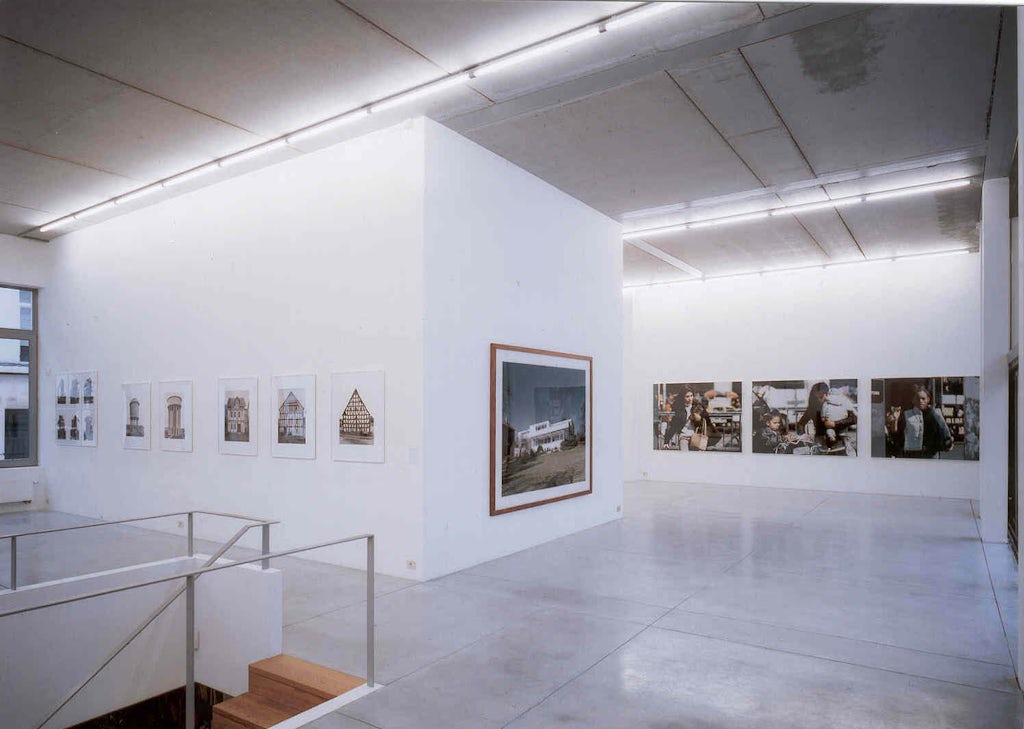
The interests of the majority of the larger galleries in Brussels and Flanders are represented by the Belgische Unie voor Promotiegaleries or BUP (Belgian Union for Promotion Galleries).
Recently, the euphoria that Brussels has experienced as a newly declared arts metropolis generated a geographical rearrangement of galleries between Antwerp and Brussels. That movement has now stabilized. Brussels is today the most important city for art galleries, and it has attracted galleries from other countries, including Barbara Gladstone (New York), Mendes Wood (Sao Paulo), Almine Rech (Paris), Daniel Templon (Paris), Natalie Obadia (Paris), Michel Rein (Paris), Dvir Gallery (Tel Aviv), Bernier / Eliades (Athens) and CLEARING (New York).
In turn, Antwerp has now completely recovered and is also bringing in new galleries, as well as hosting the Art Antwerp fair (organised by Art Brussels) and Antwerp Art Weekend. The city of Ghent has kept its galleries as well, and, especially in the summer and on weekends, Knokke too has a vivacious gallery scene.
Belgium has moreover enjoyed a strong continuity of art fairs. Despite the presence of several different fairs, Art Brussels is far and away not only the most important, but also the oldest. In 2018, it celebrated its 50-year anniversary with its 36th fair. Art Brussels’ reach is primarily regional, but it also brings in neighbouring and English-speaking countries. In this, it strongly resembles the art fairs of Cologne, Vienna and Madrid.
In 2011, the first edition of the Poppositions off-fair was held in Brussels, a curatorial event that offers a platform to both galleries with project space profiles and to smaller art organizations. In 2016, Art Brussels faced competition when New York’s Independent art fair decided to set down roots in the capital during Art Brussels, offering an alternative venue. It transpired, however, that the great potential for art collectors in Belgium envisioned by Independent was more myth than fact: their volume of transactions remained modest, and the final Brussels edition of Independent took place in 2018.
The art market obviously also has an impact on artists. Research indicates that 50% of Brussels and Flemish visual artists are currently represented by a gallery. A very small proportion of these are represented by global players at home and abroad, giving them access to global art networks. However, most artists are represented by medium or small galleries with clientele in Belgium and nearby countries.
Although the private sector can play an important role in the visual arts as a whole, as well as for public actors, There is a general mistrust of galleries, collectors and auction houses that continues to persist in Flanders and Brussels. Despite efforts by a few museums and kunsthallen to involve collectors in their efforts, interactions are still dominated by individual relationships based on mutual trust. This situation is rather different from the structural relationships seen between the public and private sectors in Germany, Switzerland and English-speaking countries.
2. Challenges in Flemish Contemporary Visual Art
The 2019 issue of Landschapstekening Kunsten, published every five years by the Flanders Arts Institute (Kunstenpunt), discusses specific questions and issues that require attention in contemporary visual art in Flanders. The full analysis is available online. Its main conclusions are as follows.
- The socio-economic position of visual artists (as well as that of curators and other workers in the arts) needs to be strengthened.
- The local role of contemporary visual arts should be reinforced, in relation to the growing interest and role of local authorities in the visual arts and the increasing importance of visual art for local communities and in public space.
- We need to work sustainably in an international setting, in relation to increasing internationalization and cultural diversity in Flanders, as well as the need for sustainability, and to be fair, honest and socially inclusive in the global world of the visual arts.
(Translated by Mari Shields)

